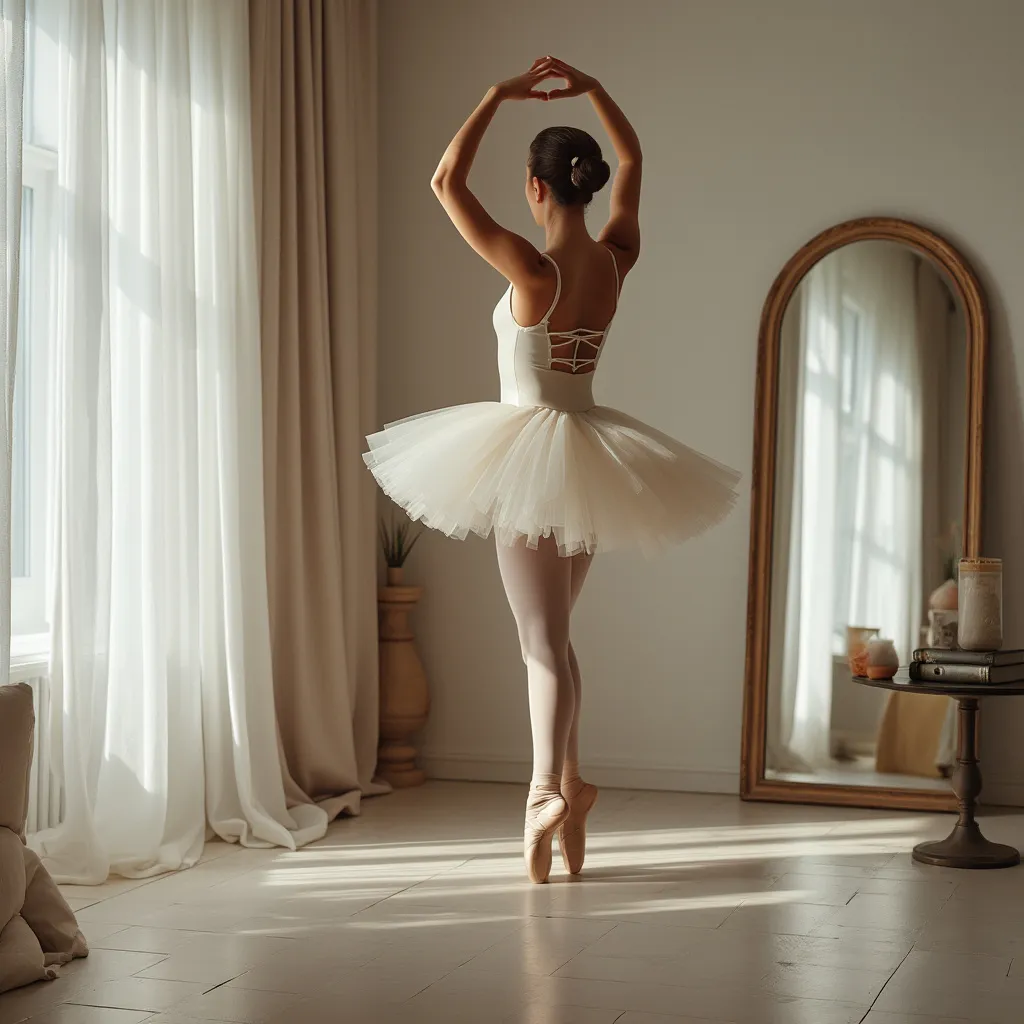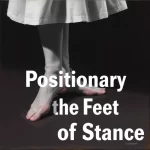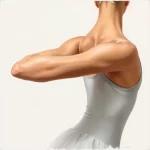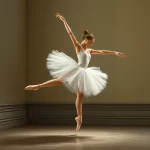Technical Terms in Ballet: En Pointe, Sur le Cou-de-pied
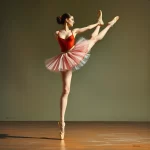
Introduction
Ballet, a classical dance form that originated during the Italian Renaissance and later developed in France and Russia, is renowned for its grace, precision, and technical prowess. Among the myriad of technical terms that define this art form, “En Pointe” and “Sur le Cou-de-pied” stand out as fundamental concepts that every ballet dancer must master. These terms not only represent specific positions and movements but also embody the discipline and dedication required to excel in ballet. This article delves into the intricacies of these terms, exploring their definitions, historical context, and significance in the world of ballet.
Understanding En Pointe
Definition and Technique
“En Pointe” is a French term that translates to “on the tips of the toes.” It refers to a technique in ballet where the dancer supports their entire body weight on the tips of fully extended feet within pointe shoes. Pointe shoes are specially designed footwear that provides the necessary support and structure to enable this delicate balance.
The technique of dancing en pointe requires immense strength, balance, and precision. Dancers must develop strong ankles, feet, and legs through rigorous training and conditioning. The process of learning to dance en pointe typically begins after several years of foundational ballet training, usually around the age of 11 or 12, depending on the dancer’s physical development and strength.
Historical Context
The concept of dancing on the tips of the toes can be traced back to the early 19th century. Marie Taglioni, an Italian ballerina, is often credited with popularizing the en pointe technique. She first performed en pointe in the ballet “La Sylphide” in 1832, captivating audiences with her ethereal and seemingly weightless movements. Taglioni’s innovation marked a significant evolution in ballet, paving the way for future generations of dancers to explore the possibilities of pointe work.
Significance in Ballet
En pointe is more than just a technical skill; it is a symbol of the elegance and artistry that define ballet. Dancing en pointe allows dancers to achieve a heightened sense of elevation and lightness, creating the illusion of floating or defying gravity. This technique is often used in classical ballets to portray characters such as fairies, sylphs, and other ethereal beings, enhancing the storytelling and emotional impact of the performance.
Exploring Sur le Cou-de-pied
Definition and Technique
“Sur le Cou-de-pied” is another essential term in ballet, translating to “on the neck of the foot.” It refers to a position where the working foot is placed on the ankle of the supporting leg. There are two primary variations of this position: devant (in front) and derrière (behind).
- Sur le Cou-de-pied Devant: The working foot is placed in front of the supporting ankle, with the heel touching the ankle and the toes pointing downward.
- Sur le Cou-de-pied Derrière: The working foot is placed behind the supporting ankle, with the heel touching the ankle and the toes pointing upward.
This position serves as a foundation for various movements and transitions in ballet, requiring precise placement and control of the feet and legs.
Historical Context
The term “Sur le Cou-de-pied” has its roots in the French ballet tradition, which has heavily influenced the terminology and techniques used in ballet worldwide. The position has been a fundamental aspect of ballet training for centuries, serving as a building block for more complex movements and combinations.
Significance in Ballet
Sur le Cou-de-pied is a crucial position in ballet, as it helps dancers develop the strength, flexibility, and control needed for more advanced techniques. Mastery of this position is essential for executing movements such as pirouettes, jumps, and various adagio sequences. Additionally, Sur le Cou-de-pied plays a vital role in maintaining proper alignment and balance, contributing to the overall aesthetic and precision of a dancer’s performance.
Training and Preparation
Strengthening Exercises
Both en pointe and sur le cou-de-pied require significant strength and conditioning. Dancers must engage in targeted exercises to build the necessary muscle groups and improve their overall technique. Some common strengthening exercises include:
- Theraband Exercises: Using resistance bands to strengthen the feet and ankles.
- Relevés: Rising onto the balls of the feet to build calf and ankle strength.
- Foot Stretches: Stretching the arches and toes to improve flexibility.
- Core Workouts: Strengthening the core muscles to enhance balance and stability.
Proper Footwear
For en pointe work, selecting the right pointe shoes is crucial. Pointe shoes must fit snugly and provide adequate support while allowing for flexibility and movement. Dancers often work with professional fitters to find the perfect pair, considering factors such as foot shape, arch height, and individual preferences.
Professional Guidance
Training en pointe and mastering sur le cou-de-pied should always be done under the guidance of experienced ballet instructors. Proper technique and alignment are essential to prevent injuries and ensure safe progression. Instructors can provide personalized feedback and adjustments to help dancers achieve their full potential.
Common Challenges and Solutions
En Pointe Challenges
Dancing en pointe presents several challenges, including:
- Pain and Discomfort: Pointe work can be painful, especially for beginners. Proper padding and toe protection can help alleviate discomfort.
- Blisters and Calluses: These are common issues for pointe dancers. Regular foot care and using protective measures can minimize these problems.
- Balance and Stability: Maintaining balance en pointe requires practice and strong core muscles. Dancers should focus on strengthening their core and practicing balance exercises.
Sur le Cou-de-pied Challenges
Common challenges associated with sur le cou-de-pied include:
- Proper Placement: Achieving the correct foot placement can be difficult. Dancers should practice with mirrors and seek feedback from instructors.
- Flexibility: Limited flexibility in the feet and ankles can hinder proper execution. Regular stretching and targeted exercises can improve flexibility.
- Coordination: Coordinating the working foot with the supporting leg requires practice and precision. Dancers should focus on slow, controlled movements to develop coordination.
FAQ
What age should a dancer start training en pointe?
Most ballet instructors recommend that dancers begin training en pointe around the age of 11 or 12. However, the exact age can vary depending on the dancer’s physical development, strength, and years of prior ballet training. It is essential to consult with a qualified instructor to determine the appropriate time to start pointe work.
How long does it take to master en pointe?
Mastering en pointe is a gradual process that can take several years of consistent practice and training. Dancers typically spend the first few years building strength and technique before progressing to more advanced pointe work. Patience, dedication, and regular practice are key to achieving proficiency en pointe.
Can adults learn to dance en pointe?
Yes, adults can learn to dance en pointe, provided they have a solid foundation in ballet technique and sufficient strength and flexibility. Adult dancers should work closely with experienced instructors to ensure safe and effective training. It is important to approach pointe work gradually and prioritize injury prevention.
What are the signs of improper sur le cou-de-pied placement?
Improper sur le cou-de-pied placement can manifest in several ways, including:
- The working foot not fully touching the supporting ankle.
- The toes of the working foot pointing in the wrong direction.
- Misalignment of the hips or knees.
Dancers should seek feedback from instructors and use mirrors to check their placement regularly.
How can dancers prevent injuries while training en pointe?
To prevent injuries while training en pointe, dancers should:
- Ensure proper fitting of pointe shoes.
- Engage in regular strengthening and conditioning exercises.
- Practice proper foot care, including addressing blisters and calluses promptly.
- Work under the guidance of experienced instructors.
- Listen to their bodies and avoid pushing through pain.
Conclusion
En pointe and sur le cou-de-pied are integral components of ballet that require dedication, strength, and precision. These technical terms represent the artistry and discipline that define ballet, allowing dancers to achieve the ethereal and graceful movements that captivate audiences worldwide. By understanding the definitions, historical context, and significance of these terms, dancers and enthusiasts alike can gain a deeper appreciation for the complexities and beauty of ballet. Whether you are a seasoned dancer or a curious observer, the world of ballet offers endless opportunities for exploration and admiration.

